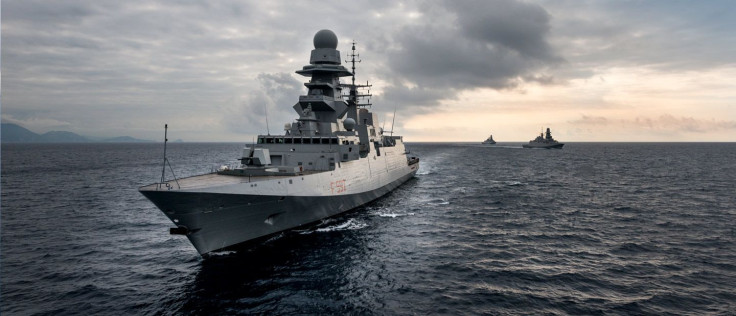5 Things Investors Need To Know About the U.S. Navy's New Frigate

Just over one year ago, the U.S. Navy dipped its toe in the water with regards to developing a new ship: It awarded five leading defense contractors $15 million each to draw up plans to design a Guided Missile Frigate to be known as "FFG(X)."
Less than one month ago, one of those five -- Lockheed Martin -- dropped out of the competition, saying it would rather build the combat system that would operate the warship than the ship itself. This leaves four contenders:
- General Dynamics (NYSE:GD), once the prime contractor building Independence-class Littoral Combat Ships.
- Austal USA (NASDAQOTH:AUTLY), the current prime contractor on the LCS.
- Huntington Ingalls Industries (NYSE:HII), prime contractor on the U.S. Coast Guard's National Security Cutter (NSC).
- Italy's Fincantieri Marinette Marine Corp.
One of these companies now stands to win at least $16 billion in Navy contracts to build 20 (or more) frigates at a cost of $800 million (or more) each. And the competition is heating up.
RFP drops
Last week, the Navy issued its final Request For Proposals (RFP) to the remaining candidates. Each will now submit a bid to build the new frigate -- and unlike the Navy's current littoral combat ships, this frigate is going to be a beast.
The littoral combat ships that General Dynamics, Austal, Huntington, and Lockheed Martin have been building for the Navy, you see, have been criticized for lacking "teeth" -- specifically, offensive weaponry that would make them more than glorified Coast Guard cutters. FFG(X) by contrast, will come armed to the teeth.
5 elements to make a winning frigate
According to the RFP, the new frigate must sport five key elements that will permit it to punch above its weight at sea:
- At least 32 Mark 41 vertical launch system cells to fire surface-to-air missiles for aerial defense.
- Anywhere from eight to 16 over-the-horizon anti-ship cruise missiles for naval offense.
- Lockheed's state-of-the-art, AEGIS-derived, COMBATSS-21 Combat Management System (see above) to tell the crew what to shoot those missiles at.
- Space aboard to carry both an MH-60R Sikorsky Seahawk naval helicopter, and also a Northrop-built MQ-8C Fire Scout drone helicopter.
- Room to install a 150-kilowatt laser.
That's right: This boat is going to have laser guns -- or at least the capability to support them as the Navy steps up the power of the laser cannons it's working on.
What this competition means to investors
That last point could actually be the key item for investors to consider -- and not just because lasers sound cool. As USNI News reports, integral to the Navy's RFP is the idea that FFG(X) should have "flexibility in the design to accommodate efficient warfare systems upgrades" as technology advances over time.
For example, right now, about the biggest laser cannon the Pentagon has available to it is a 100-kilowatt High Energy Laser being developed by Lockheed and privately held defense contractor Dynetics. But 150-kW lasers are on the drawing board, en route to weapons boasting 500 kilowatts or even a full megawatt of throughput. (To put that in context, while a 100-kW laser can fry a drone, or given enough time on target, perhaps a guided missile, a 500-kW laser could shoot down ICBMs and airplanes as well). Knowing these weapons are on the horizon, the Navy is asking its contractors to design to that expectation, so that when the weapons are ready, FFG(X) will be able to support them.
Why is this significant to investors?
Consider: At an expected purchase price of perhaps $800 million per hull (exclusive of equipment costs), the company chosen to build FFG(X) already stands to reap revenues of $16 billion or more just from building the 20 frigates the Navy currently plans to order -- and that's just the up-front cost. If FFG(X) is being designed for evolution over time, it's less likely the frigate will be phased out for obsolescence in the future, and more likely it will be upgraded.
This is likely to mean additional contracts for whichever company is tapped to build this frigate in the first place, as it would be the logical choice (though not necessarily the automatic choice) to upgrade those vessels.
Final bids are due for the FFG(X) competition on Sept. 26, and by sometime next year, we should know the winner
Rich Smith has no position in any of the stocks mentioned. The Motley Fool has no position in any of the stocks mentioned. The Motley Fool has a disclosure policy.
This article originally appeared in The Motley Fool.





















